#Art in the Age of Digital Puritanism
Text

Iness Rychlik - Art in the Age of Digital Puritanism
263 notes
·
View notes
Text
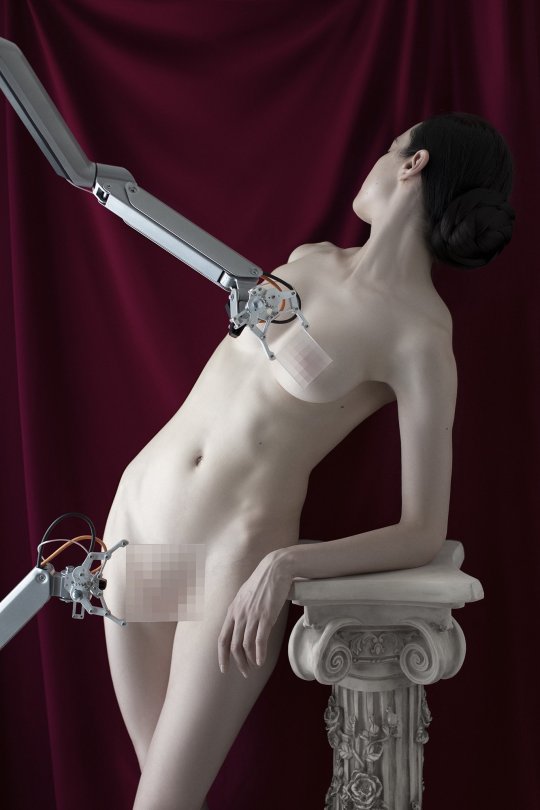
Art in the Age of Digital Puritanism (2022) by Iness Rychlik
The artist reposted it in 2024 "because it feels relevant in social media today".
#Art in the Age of Digital Puritanism#2020s#2022#self portrait#photography#Iness Rychlik#art#contemporary#puritanism#self puritanism#Miss Cromwell
37 notes
·
View notes
Note
You can ignore this ask if im bothering, but whats your minor policy here? Like, can minors only not interact with the nsfw posts or not at all?
The short answer:
Sfw = ✅✅✅✅✅ minors can interact
Nsfw = 🚫🚫🚫🚫🚫 minors shouldn't interact
Welcome to my kingdom, anon!!!!!!! 😊
The long answer for people who like essays:
Note: I'm going to use this as a FAQ so the "you" I'm referring to is the General You and not anon.
“Do you mind if your work gets seen by minors?” Is actually a question I’ve been asked a lot because I write and draw saucy works and the accountability has seemingly been shifted from legal guardians onto randoms like me. They say it takes a village to raise a child after all. This leads easily into the subjects of censorship, human sexuality, responsibility in the digital age, parasocial boundaries, society and individuality, proliferation of paywalls that rope off the internet and free flow of information… and so on. So many subjects, so little time, and yet so intersectional. I see it often, the ubiquitous “minors dni”, even on people’s pages that don’t have explicit material; I’m guessing it’s because people don’t want the headache, but any dni is as good as a line drawn in the sand, a magic circle where all your morals live, until the wind blows it away. Have you ever been asked “are you over the age of 18?” I pressed that button just the other day and just as easily as I had when I was a minor. “Do you mind if your work gets seen by minors?” is the question I’m asked, like my saucy work is a landmine for someone to accidentally step on and to which I can’t help but imagine a different question: “Do you mind if a minor seeks it out?”*
I’m not anyone’s parent and it is not my responsibility to take care of a stranger’s welfare. You have to understand that the internet is a grey place. I don’t know who’s looking. I’d rather not know.**
I tag my smut and label it with a 🔞 with the implicit meaning being don’t look at things you’re not supposed to be looking at. I won’t ever know for certain if a minor looked, pressing the proverbial “yes I’m over the age of 18”, unless that minor was a fool and broadcasted their vulnerability to the world at large, interacting with my unsafe works knowing that their profile reflected that same perceived lack of impulse control. Goodness, if they were smart, they’d be liars.
Even so, I was young once; I lived like the puritanical ideal while also having seen society’s forbidden knowledge [sex things, oh my!]. No matter how well someone hides the cookies, someone will always climb the fridge to get them, and if I had fallen off the fridge, no one should blame the baker. And no one should tell the baker that they should stop baking, especially in their own bakery.
We exist in a moment in time when even payment processors have a say in what kind of content is distributed and how that affects art as a whole, eating into adult spaces [recently the Gumroad nsfw policy leaving nsfw artists reeling] and especially encrouching on queer spaces. Imagine the amount of chargebacks various nsfw gets because sex is so vilified in society that people have to panic when caught oh I'm really not into big anime boobs dw, oh i didnt actually commission this nsfw artist and waste 20 hours of their precious time and labour, oh i need my money back because...; I’m sure the money system abhors it for a money reason, but the root of it is the proliferation of Protect the Children™ used by puritanical opportunists. You the individual affect the wider culture as a whole through the groups you belong to, even if you don't intend to.
I’m asking for people to be smart, to think of their own well-being, but to also think of where they draw the line. Filter the word “smut” and “nsft” and "suggestive" and you should be safe on my page even though the sauce is rare in my Tumblr. This goes for everyone this applies to and not just minors.
Welcome to my kingdom. 😌
Sincerely,
Yuki, your friendly everyday sex-positive asexual
*Yes, I mind. But it’s not my problem.
**Showing nsfw to a minor is illegal and people risk trouble for doing so [lack of mens rea notwithstanding in a court of public opinion], but I have 5 different social medias. I cannot play detective and sift through every follow, like, reblog. That's impossible. Make it easier on me.

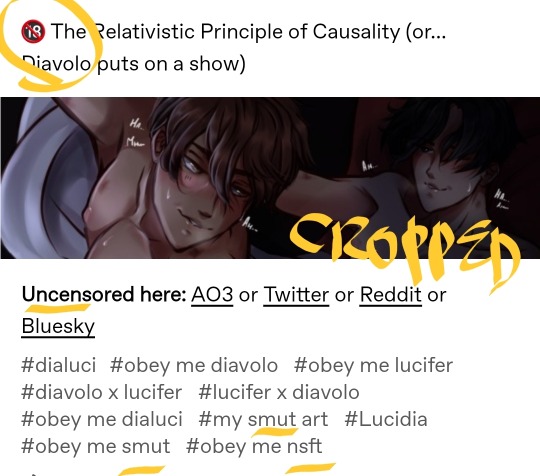
I warn. It is your responsibility to comply.
Thank you kindly!
#thank you everyone for putting these kinds of questions in my ask box so i can finally write my faqs#i hope everyone has a good time here no matter who they are#everything is a nuanced conversation waiting to happen#my faqs#my asks#i feel like i havent said everything i wanted to say but itll be too long if i kept going#send me more asks!
2 notes
·
View notes
Text
Welcome to Star's Domain (An Intro)

About Me:
Pen-name:
Star
Age:
19
Identity:
Genderfluid Genderqueer, AlloAce, Pronoun Experimental
Personality:
Spaced Out Sheltered Adult About to Get Run Over in the Walmart Parking Lot, Lives Off of Ramen and Poptarts, Fearfully Stingy, Gets Attatched Way too Quickly, Will Cry if you Text in a Negative Tone
Mental Health:
ADHD, Major Depression and Anxiety, BPD
Dissacociative/MaDD Symptoms
Suicide Attempt Survivor
Conflict Avoident but also Easily Frustrated
Hobbies and Interests:
Writing, Digital Art, Worldbuilding, Pride-Flag Making, Gaming, Cartoons, Comics, Life Simulation Games, Sandbox Games, Fanfiction

List of Current Projects (and associated masterposts):
The Stars of Élan Vital (Fantasy Series Idea): TBC
The Ultimate World Building Resource List: TBC
PSYEQID (Personal Simplified Yet Expansive Queer Identity Dictionary): TBC
Pride Flags: TBC
WIPS: TBC

About This Blog:
This blog is basically my personal/project-related blog, and in essence my main blog (even though it's technically a side-blog). I post whatever the heckity heck heck I want on here. Flags, creative projects, personal rants, memes, cursed thoughts, ETC. There is no such thing as consistency here, this is simply my domain.
I do not have a DNI for my blog. I only have DNIs on certain posts, but even then I use DNIs only as a warning, not as a blocked entry sign. As such, anyone is free to personally message me and send me asks. Be warned, however, that if anyone gets too cray-cray in my Ask-box/DMs I WILL screenshot the evidence and call the authorities.
My stances are as follows:
Queer Inclusionist - I support all in good faith queer identities (Identities which are not blatantly and intrinsically harmful to others).
Alterhuman Supporter - Therians, Other-hearted, Otherkind, ETC, y'all are awesome! Keep doing you!
Profiction - Creative censorship is harmful to artistry and instills a shame-ridden puritanical community that lacks comfort, security, and safety.
Anti-Anti - Censorshippists and Puricultists (AKA: Antishippers) are not entitled to their opinions, as they are harmful and invalidate the experiences of others. I will show respect to the members themselves if given respect, but I will never respect their horrid ideology that kills and abuses others.
Paracritical - While I am accepting of most paraphiles, I am very uncomfortable with potentially harmful paraphiles such as pedophiles and zoophiles. I do not want to interact with them, neither do I "accept" that aspect of themselves.
To be clear, these individuals are human beings just like the rest of us. I do not support harassment towards non-offenders for desires that they can't control. BUT I ALSO don't think they should be proud of said desires. I encourage these individuals to seek the help they need. There is a difference between have compassion for others and understanding when something is wrong.
The Pro-paraphilia community leans more towards accepting these types of paraphiles as they are instead of supporting their journey to gradually overcome their attraction. Because of this, I am uncomfortable with the term Pro-paraphilia and use Paracritical instead.
Pro-Endogenic - As a singlet, my opinion on this topic is basically meaningless. Regardless, I still want to express my support for the Plural Community. I think it's rather ignorant of System Medicalists to adhere the DSM like it's a rule-book instead of a guide-book. it was written by humans, who are not that smart and commonly make mistakes, especially due to biases. Our understanding of science as a whole is constantly evolving; people should be more open-minded.
Anti-Transid - While some of the experiences under the Transrace, Transage, Transabled, ETC labels are indeed acceptable by themselves, lumping those experiences together to create umbrella terms with the "Trans" prefix (which commonly denotes transition from one concept to another) is dangerous, offensive, and bigoted. It undermines the experiences of actual minorities, and in some cases can be used as a means to harm innocents.
Disclaimer: I DO support the Chronosian label, as it removes the harmful implications that the Trans prefix in Transage had.
With everything out of the way, enjoy your stay!



#introductory post#introduction#inclusionist#lgbtq#lgbtqia#lgbt#queer#mogai#neurodivergent#mental illness#artist#writer#pride flags#world building#proship#pro ship#profiction#pro fiction#anti hara#anti harassment#proshippers please interact#memes#shitposts#cursed content#blursed content
23 notes
·
View notes
Text
So I guess the weird fringe bullshit I am hung up on would be like...
- Invest in nature like you would invest into the economy or education, and value nature as a way a nation can be wealthy and successful. Ideally, restore nature on an industrial scale.
- Be ready for a wildfire season and have a more funded and larger standing response team for it. International cooperation is important on this matter.
- The spaces people live in is an important to how they interact with the world, so we need more public transportation and human-scaled settlements to allow small businesses to thrive over giant corporations, for children to have independence, for people to be healthier both physically and mentally, etc. So, Urbanism, anti-suburbia, human-scaled architecture, select traditional architecture, etc.
- Protection for art in the digital age. Art from and inspired by other cultures, or of covering fringe and problematic artists, should not be adulterated for the masses. There need to be spaces built up to support a culture of expression which is okay with exploring the politically incorrect things like sexuality and violence (Especially as puritan pressure groups increase their presence)
- Space exploration is important to invest in and the moon colony is cool
1 note
·
View note
Photo
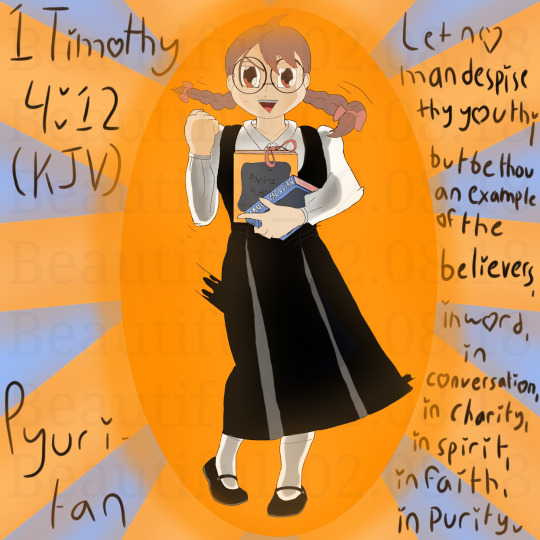
1 Timothy 4:12 (KJV)
12 Let no man despise thy youth; but be thou an example of the believers, in word, in conversation, in charity, in spirit, in faith, in purity.
(This is old art from my instagram. Only posting it here now. You can find me on Instagram: @beautiful_02.08.18)
Don’t let young age hinder your service to the Lord. Like the 1st-year Junior High school Christian manga character Pyuri-tan (a wordplay for ‘puritan’,) she appears in the Japanese newspaper The Christ Weekly. She and other anthropomorphic Christian denominations go through school discussing about themselves in this slice-of-life manga. You can see some pages here: https://www.facebook.com/ChristianAnimeProject/
The illustrator for Pyuri-tan manga goes by the name of SONO. The franchise seems to be decent enough since it has their own book and card game: http://www.kirishin.com/book/25392/?fbclid=IwAR0xcQ4lDF4TzI6X9G5849-WSilVwW8JRfoTmuEH2Dv1iZqmzJH-TOHZlNo
https://www.amazon.co.jp/dp/4873957591/#
This one took a long time to finish but I am happy with the results. This is one of my takes in traditional to digital art. The anatomy may look a bit weird as I was trying to make her upper body lean toward the viewer while her head is facing towards so I tried some foreshortening here.
Pyuri-tan, from what I see, is depicted as this energetic yet awkward girl so I tried to do the same. Since she is supposed to be the anthropomorphic denomination of Puritanism I drew a ‘Pilgrim’s Progress’ book since John Bunyan, the author, is a puritan. I assumed she’s around 12 - 13 years old as those are the typical ages for 1st-year Junior High School students in Japan so if I got it right I drew a ‘Manga Messiah’ manga (part of the Manga Bible series) to showcase her youth. The Manga Bible series’ author is Hidenori Kumai and illustrators are Kelly Kozumi Shinozawa and Ryō Azumi.
The manga is in front of the book to symbolize that while she is young, she is capable of doing great things. I read some of the pages and its good to me. Biblically accurate?
Well, from what I understand there was this part where Pyuri-tan says to burn Halloween then following to a panel where the character Nonchurch-chan (its not a wordplay however) saying they can’t eat the pumpkin pudding she made following to Catholic-kun (‘-kun’ can be used for females) saying that all food is okay. There may be some mistranslations such as to what context the ‘burn’ was referring and the pumpkin pudding with a pork bone, but I’ll take what I can get with Christian content. I am planning to draw the other characters but I am going to draw 2 other characters from different Christian manga first.
I would love some critique for my art, research, and grammar so don’t be afraid to critic me!
References:
https://www.blueletterbible.org/kjv/1ti/4/1/
https://www.gotquestions.org/Puritans-Puritanism.html
https://www.gotquestions.org/let-no-one-despise-your-youth.html
https://www.desiringgod.org/articles/specifically-who-were-the-puritans-what-were-their-names
https://www.apuritansmind.com/puritan-favorites/john-bunyan-1628-1688/
https://www.gotquestions.org/John-Bunyan.html
https://www.gotquestions.org/John-Bunyan.html
https://www.goodreads.com/book/show/1821147.Manga_Messiah https://www.goodreads.com/author/show/4371598.Ry_Azumi https://dbpedia.org/page/Ry%C5%8D_Azumi https://www.goodreads.com/book/show/1821147.Manga_Messiah https://en.wikipedia.org/wiki/Kelly_Kozumi_Shinozawa#:~:text=She%20was%20influenced%20by%20her,at%20Japanese%20American%20United%20Church. https://www.facebook.com/352004661512421/photos/a.369775476402006/758922924153924/
#God#Bible#Bible art#Bible artwork#Puritanism#Bible verse#Christian#Christian manga#manga#digital art#art#fanart#manga recommendation#art work#art criticism#art critique#art post#post
0 notes
Photo
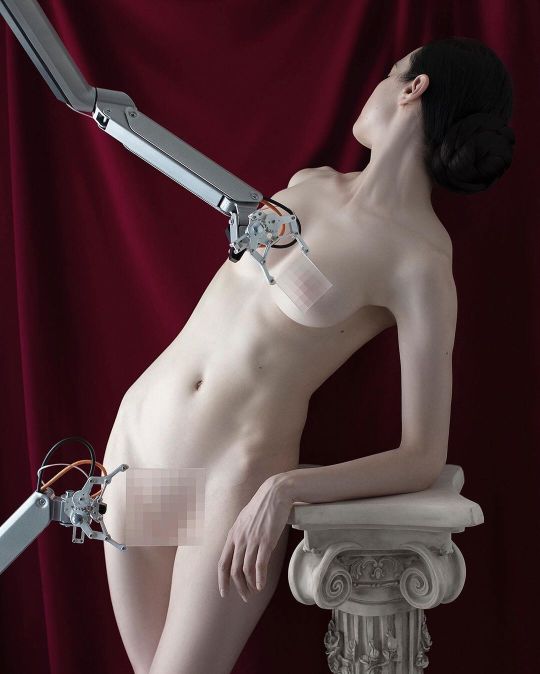
Good morning 🌞 How are you today? #haveagoodday here’s my #morninginspiration #morningmood with @inessrychlik and her “Art in the age of digital puritanism. Self–portrait”. Unfortunately not just art… #conceptualphotography #artasinspiration #goodmorningpost #goodmorningart #contemporaryart https://www.instagram.com/p/CiWhOCsoOUk/?igshid=NGJjMDIxMWI=
#haveagoodday#morninginspiration#morningmood#conceptualphotography#artasinspiration#goodmorningpost#goodmorningart#contemporaryart
0 notes
Photo
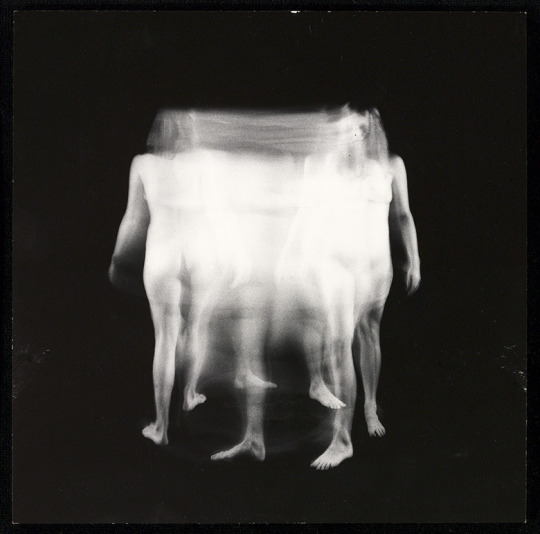

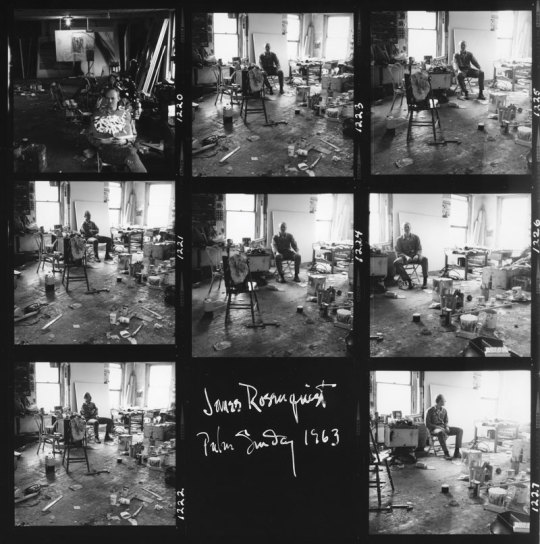
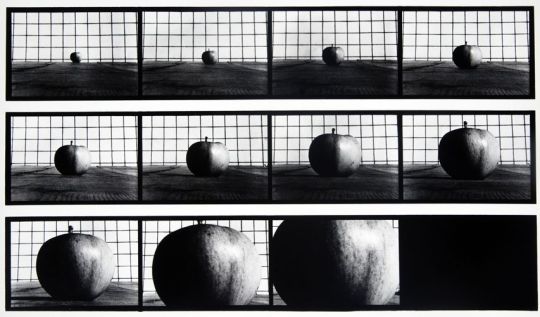
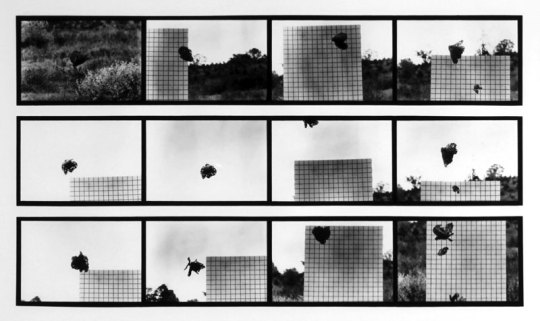

Hollis Frampton
Hollis Frampton's was an American avant-garde filmmaker, photographer, writer, theoretician, and pioneer of digital art. His most known photography explored ideas of series and sets, and later began to make films that explored similar ideas and based a lot of his early films on concepts. All of his very early works were either discarded or lost, though were known to be reasonably simple in construction. His earliest surviving work was Information (1966) with other early works like Maxwell's Demon, Surface Tension, and Prince Rupert's Drops being based on concepts from science. As he progressed as a filmmaker his films gradually increased in scope and ambition. He was a ‘structural filmmaker’, a style that focused on the nature of film itself- Gardner stated his dislike of that term as it was too broad and didn't accurately reflect the nature of his work.
His film Zorns Lemma (1970) drastically altered perceptions towards experimental film. Formed in three different sections, the first is a reading (by Joyce Wieland) of the Bay State Primer ( a puritan work for children to learn the alphabet) with the sentences used highlighting the foreboding themes of the text (like "In Adams fall, we sinned all."). The second section was based on work by Carl Andre which started out with an alphabetical list of words for each letter in the alphabet with each subsequent list being replaced with a letter until it is just letters- Zorns Lemma reversed the concept and starts with a twenty four letter alphabet (I/J and U/V are considered one letter) and each letter shown for one second then looping and the second cycle each letter being replaced with a word that starts with each letter until the words are replaced by an active film shot, such as washing hands or peeling a tangerine until there are only moving images. The third section contains a seemingly single shot of a couple walking across a snowy meadow with the sound of six women reading one word at a time from Theory of Light. One interpretation of Zorns Lemma was that it’s commentary on life's stages with the morality of the Bay State Primer being childhood, the sets of numbers representing maturing and interaction with the world, and the third part representing old age and death.
He later made the Hapax Legomena films, a series of seven films of which are the most well known and explore the relation between sound and cinema ( an area often disregarded in American avant-garde film) by using a disjointed relationship between the two. Poetic Justice explores the "cinema of the mind" as the film takes place in the viewers' imagination(s) as they read title cards- an extremely rare book edition of Poetic Justice was printed by the Visual Studies Workshop. His final major film project was Magellan (named after the explorer who first circumnavigated the world)- it was intended to be shown as a calendrical cycle, one film for each day of the year.
In the later years of his life Frampton taught at SUNY Buffalo, writing, working on Magellan and ongoing photographic projects with artist and wife Marion Faller, and continued to investigate the relationship between computers and art.
5 notes
·
View notes
Text
Pantheon of Influence
The fate that awaits Elizabeth as the daughter of a media entrepreneur turns out to be a heavy burden. Left with an Empire of «old fashioned» media, that is on the edge of abyss. (…) times change and the Empire is no longer what it was. [1] The newspaper of the day, fashion, both go out of fashion, the news quickly becomes outdated. [2]
The heritage in danger, it requires an effort to adapt to the changing conditions.
She (…)felt a thread of a sense of personal responsibility associated with the deep, deep fear of loss. [1]
The solution for preserving new media culture lies not in attempting to circumvent its variability with outdated notions of fixity, but rather in embracing the essential nature of the medium and transforming its greatest challenge into a defense against obsolescence. [3] While “old” media such as print, film, and television traffic in immaterial representations that can be reproduced endlessly for any number of viewers, the interactivity of “new” media draws it closer to live performance. [4] As the secular empire faded, a new idea of spiritual domination that had been growing quietly and slowly in seclusion slipped into the great house of the dying world giant. [5] Moreover, the motive behind the writing of history was not objective curiosity, but a desire to influence contemporaries, to stimulate and uplift them, or to hold a mirror up to them. [6]
The new Brand of Elizabeth Murdoch stands above the chaotic noise of information and
media. From the elevated platform vision is unobstructed. [7] At that height one could look into the top rooms from the elevated pathway. [8]
In all of these media we see a number of consistent patterns. [9]
That assemblage is the “ megamachine,” or the apparatus of capture, the archaic empire. [10] (…) Elizabeth always tried to talk as though there were lots of people in it with her. [1] Her new brand is not defined by its clear agenda but the appropriation of viral phenomenons. Consisting of Influencers, attracted by their striving for fame and recognition.
The gods have entered the “cultivated” world; they no longer speak through the moving figures of animals and natural elements but through those of a sedentary pantheon that takes charge of society and supports the activity of transforming the world. [11] The image (…) shifted from social crusader and aesthetic puritan to trendsetter and media star. [12] But they somehow function together in structuring the social life process, as complementary media, each with its own specific affordances and limitations. [13] The crowd, a compact mass, a locus of multiple exchanges, individualities merging together, a collective effect, is abolished and replaced by a collection of separated individualities. [14] The media become the messengers, rather than the message. [15] The type of frame used to present information dramatically affects how people make decisions and judgments, and is consequently a powerful influencer of behaviour. [16]
Therefore, this new type of Pantheon is created by Elizabeth. Gathering selected contemporary influencers under her roof.
Influencers such as:
Owners of different Media outlets,
Presidents like Donald Trump, Vladimir Putin,
modern industrialist entrepreneur like Steve Jobs or Bill Gates. [17]
very bright people, like Stephen Hawking and Elon Musk. [18]
CEO of Social media Mark Zuckerberg,
CEO of Search engines Sundai Pichai,
Environmental activists like Greta Thunberg,
Sport Stars like Roger Federer or Cristiano Ronaldo,
Or trash media stars like the Kardashians.
The overall effect of the display (…) is create an exotic display; a sort of cabinet of curiosities. [19]Contradicting and supplementing each other.
Her palace a place to collect them all.
The facade was well constructed, composed of bricks, glass walls and windows. [20]
The field of glass bricks is ordered in a raster of a thin solid framework made of white granite with black frames and stripes indicating the main direction. [21]
Hall of Fame
The entrance was discreet, with a rounded metal railing. [22]
Leading into the Hall of Fame.
Inside, you confront a wall of glass bricks set in concrete in a black steel frame at the back of a standard Paris type courtyard, with two steel ladders flying up on either side, and some massive floodlamps carried on clever steel brackets. [23] Self reconfiguring building skins (…)filter both urban noise and airborne toxins.[24] Creating a place which was quiet, well lit (…). [25] Only selected and high-quality materials are used. The atmosphere was perfect, the moment sweet for something sacred. [26]
It’s is the Place Elizabeth welcomes her guests.
Start with a house cocktail—say, L’Alsacien, in which the aperitif Belle de Brillet meets cognac, pear, and fresh lemon in a happy union. [27]
Everyone shouts and has an alcoholic smile(…) A French aperitif is taken when you are seated around a table. There are two, three, four persons. You have chosen your companions. You drink slowly. [28]
Chamber of Feasts
In the dining room, meals were served family style at long tables that could seat 150 guests. [29] Only the finest dishes made by world class chefs are served. This dinner the place for debate and disputes. This performance, itself enough to win great fame,(…) [30]
It resembles a Sensation drama: play that intends to create strong effects. [31]
Harmony and dissonance of ideas create a rough and interesting music. [32]
The principal requirements of a summer dining room are water and greenery; of a winter one, the warmth of a hearth.[33] Both should preferably be spacious, cheery, and splendid. [33] For this reason, distribute more spacious intercolumniations around the performance space. [34] (…) the walls of the ceremonial chamber were covered with purple tapestries embroidered in gold, specially made for this feast. [5]
Oracle of Artificial Intelligent
In the middle, as in the center of a house, there is an Capsule, roofed, spacious, and majestic; (…) their lineaments taken from the Etruscan temple, as we have described it. [33]
Enter the oracle. [35]
Intensifying the color, lights, and excitement of Broadway by translating the commercial message into form and color, a wordless interpretation of New York. [33] The “Oracle (…)” presented a head that seemed to float in space. [36]
Commercial constructions such as Apple’s Siri and more recently Microsoft’s Cortana are quite literal but archetypal examples of “the guide” or “concierge,” elsewhere manifested as the guide, oracle, or personal secretary. [37] There is no knowing how far a real image may lead: the importance of becoming visionary or seer. [38]
Is it Illusionism, confusion, or manipulation? [39]
Paris
Paris. [40]
Facing Notre Dame, a church for one god.
In close Proximity to the existing Panthéon, a symbol of glory and a burial place of famous French personalities.
Elizabeth's palace does not require the physical size of those buildings of past times. It is not dependent on its rigidity but flexibility to accomodate as much power as possible. In the digital age, power is no longer seen through its built image in stone, but through the power of those present. The once powerful institutions have lost their power. Today, the influence changes rapidly from person to person, from ideology to ideology, from institution to institution.
Elizabeth's pantheon is a machine to capture those all new and constantly changing influence.
Bibliography: [1]Asimov, Complete Robot Anthology.[2]Serres, Biogea.[3]Rinehart, ReCollection Art New Media and Social Memory.[4]Siemens, A Companion to Digital Literary Studies.[5]Semper, Style in the Technical and Tectonic Arts or Practical Aesthetics.[6]Freud, The Uncanny.[7]Alexander, A Pattern Language.[8]Hollis, Cities Are Good For You.[9]Tuck, A History of Roman Art.[10]D. Guattari, A Thousand Plateaus.[11]Henaff, The Price of Truth.[12]Hays, Architecture Theory since 1968.[13]Schumacher, The Autopoiesis of Architecture Vol 2.[14]Foucault, Discipline and Punish.[15]H. Buehlmann, Quantum City.[16]Holden, Universal Principles of Design.[17]Heskett, Design and the Creation of Value.[18]Green, Architectural Robotics Ecosystems of Bits Bytes.[19]Tythacott, Collecting and Displaying Chinas Summer Palace in.[20]Bill, Form Function Beauty Gestalt.[21]L. Eisenschmidt, Twentieth Century Architecture.[22]Goldsmith, Capital New York Capital of the 20th Century.[23]Banham, Critic Writes.[24]Bureaud, MetaLife Biotechnologies Synthetic Biology ALi.[25]Jerram, Streetlife The Untold History of Europes Twentie.[26]Goldsmith, Capital New York Capital of the 20th Century.[27]F. Travel, Fodors New York City 2015.[28]L. Corbusier, When the Cathedrals Were White.[29]H. Lawson, Gastropolis Food and New York City.[30]Serres, History of Scientific Thought.[31]Gaudreault, A Companion to Early Cinema.[32]Alberti, The Family in Renaissance Florence.[33]Alberti, On the Art of Building in Ten Books 1988.[34]Vitruvius, Ten Books on Architecture 1999.[35]Serres, The Five Senses.[36] Gaudreault, A Companion to Early Cinema.[37]Clarke, Design Anthropology Object Culture in the 21st Ce.[38]Deleuze, Cinema 2 The Time Image.[39]Derrida, Signature.[40]Naginski, Sculpture and Enlightenment.
3 notes
·
View notes
Photo

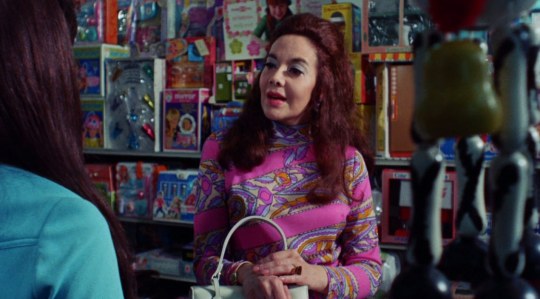
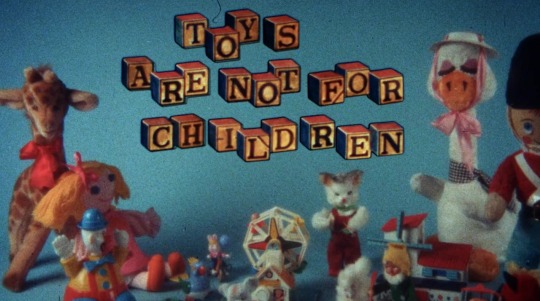
Toys are Not for Children (1972). I’m using this period of enforced social isolation to explore the weirder corners of YouTube for long forgotten and obscure movies. (My boyfriend is accompanying me only semi-willingly). Most directors of late sixties and early seventies sexploitation flicks opted to sensitively and tastefully explore the genuine psychological condition of nymphomania. (Only kidding!). The ultra-tawdry Toys Are Not for Children, meanwhile, focuses on dysfunctional family dynamics and one troubled young woman’s arrested emotional development. Can you say: “daddy issues”? (Actually, Toys would make a great double bill with my earlier recommendation, the thematically similar Love Me Deadly). Our creepily child-like heroine is waif-like Jamie Godard, who still plays with toys at the age of twenty and is unhealthily fixated on her long-absent father. (Actress Marcia Forbes is clever casting as Jamie, considering she resembles a doll herself). She’s also sexually frigid (much to the blue-balled frustration of her handsome new husband). When Jamie befriends middle-aged prostitute Pearl (who resembles an escapee from a Jacqueline Susann novel with her waterfall of teased hair and Pucci-print dresses), her life takes an unexpected turn … Toys is voyeuristic, perverse, disturbing and incredibly distasteful, but also undeniably strangely compelling. Director Stanley H Brasloff takes unexpected detours (for example, the “cold opening” is so long the credits are about 15-minutes into the film). The storytelling is fragmented, jagged and nonlinear. Are the confusingly non-signposted dream sequences and flashbacks a result of directorial incompetence or is Brasloff deliberately going for challenging art cinema-style inscrutability? (Sometimes you only know you’re watching a flashback by the characters’ hairstyles). One genuine highlight: the opening credits ballad "Lonely Am I" (crooned by someone called T L Davis) is adult contemporary loungecore bliss. So many of these exploitation movies had great introductory songs (i.e. "What Does a Bird Do?" by Jerry Kane in Sins of Rachel. The dramatic faux Shirley Bassey / James Bond number that opens Love Me Deadly). Ideally someone would issue a digitally remastered, lovingly restored CD box set of all this fabulous obscure music with lavish sleeve notes! Finally: I don't know what it says about me, but I found abusive Puerto Rican pimp Eddie (played by Luis Arroyo with superb nonchalance and contempt) quite sexy. He possesses definite sleaze appeal and magnificent greased-back hair and sideburns!! The version of Toys on YouTube is obviously via Something Weird and contains a good ten-minutes of fabulous exploitation trailers before the main feature starts. Link.
Let’s face it: the puritanical, hypocritical and homophobic hellsite Tumblr has become a dying platform since it banned adult content in December 2018. I post here less and less. Follow me instead on Instagram, Twitter, Facebook or on my blog. Fuck Tumblr!
#exploitation cinema#exploitation movies#sexploitation#toys are not for children#vintage sleaze#bad taste#lobotomy room club#lobotomy room#bad movies we love#bad movies for bad people
4 notes
·
View notes
Text
Old World’s New Guard
The total digitization of the fashion experience has exposed luxury and high fashion to new, younger audiences, and are they ever buying! Millennials and Generation-Z, that is ages 18-34, have made up for up to half of last year's growth for mega-brands like Gucci and Saint Laurent. Clearly, appealing to this market has proven lucrative, and many are scrambling to capture a relevant zeitgeist in the blitzkrieg speed of today's fashion. More and more, success, influence and full price sell through are predicated on strong digital presence and an ability to captivate this sector and cultivate appeal. Fashion's long time obsession with youth has shifted from the conceptual praise and allure to a very literal catering to their tastes and sensibilities. Consequently, luxury has made strides into becoming more inclusionary, transparent and communal but also potentially more vapid and vulnerable.
Designers like Virgil Abloh, Heron Preston, Demna Gvaslia and more are known to keep a revolving cast of young social influencers and style arbiters at their helm for inspiration and tangible insight into ground-level trends. Social superstars like Ian Connor, Luka Sabbat or Bloody Osiris are used as muses and underpin the growth of these modern designers. Many of these personalities have become de facto consultants to major fashion houses and their highest contributors. At Dior, one of the oldest and most traditional houses in spirit, director Kim Jones, jewellery designer Yoon Ahn, and key collaborators Matthew Williams and KAWS are all under forty-five. Beyond the industry-wide appointment of young creatives to the helm of major fashion houses, collections across the board all seem to be attempts to capture the minds (and wallets) of the under thirty-five sector. No need to tell anyone how loungewear, t shirts, bold graphics and sneakers have dominated the fashion conversation for the better part of the decade. Its a given even at the highest strata of the fashion world. The new class of designers seek not only to usher in a new era of luxury and high fashion, but also contribute to the evolution of their contemporary definitions.
Traditionalists and puritans claim the bourgeoisie, exclusionary nature of the fashion world of old remains its main tenant of allure and attraction, but also necessary to its basic core. Its opaqueness creates a stronger singularity of vision that elevates the practice to an art form. Original and distinct fashion perspective, with an eye for quality and craftsmanship have contributed to the longevity of these storied houses thus far. Often, modern collections seem to be reactionary. The amalgamation of various voices, opinions, and trends rather than a singular artistic vision.
The mass appeal of luxury in the past has been due to the calculated distribution channels and aspirational nature of the products. Mass production, focus on accessories and fragrances has, for many critics, threatened the artistry and discipline of fashion. Designers' roles have been bastardized to totems of social cache, relegated to powerful marketing tools and digital aptitude.
Heritage, quality, construction, material, or unique concept are no longer the hallmarks of high fashion houses. It's simply about who can dominate the digital conversation, particularly on social media, that reaps the highest rewards. No doubt Jones and Abloh will boost revenues across the board at their current respective helms, but do the collections have the staying power and timelessness that these houses stand for? Fashion has always been a balancing act between art and commerce, however with the paradigm shifts, creatively and corporately, we see today, it may be ever tipping to the side of commerce.
Beyond compromising the art and design in modern fashion, the rampant commercialization may lend to its downfall in deeper ways. As mass production and rapid expansion reach a fever pitch, the desire and allure begin to wane and drives demand for product down. Careful supply and distribution chains are integral to the covetability and price point for these products. Ease of access and price barriers work to the industry's advantage but more and more these houses are looking to commoditized for the short-term gain. Over-saturation is a very finicky thing, especially in the paradigm of today's retail landscape. As the masses have more access than ever through e-commerce channels, retail stores or second-hand merchants, sales and influence may be reaching a breaking point, and the bubble may soon pop.
4 notes
·
View notes
Photo
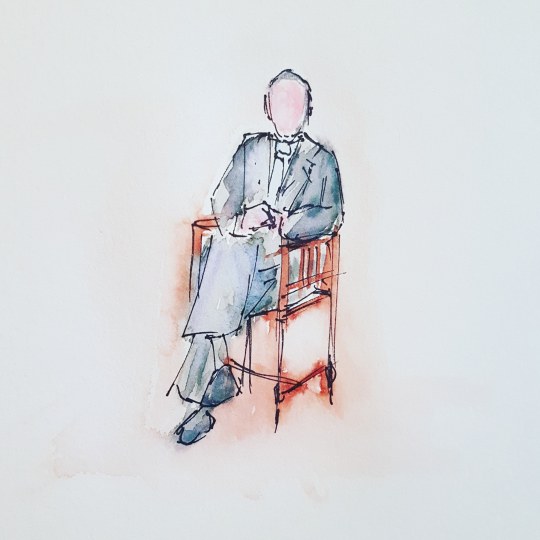
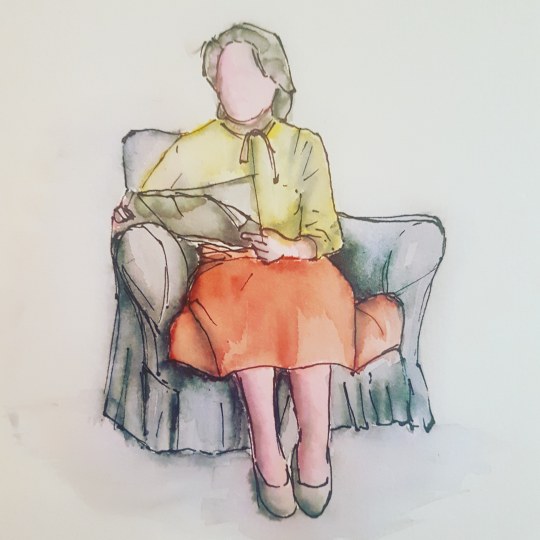
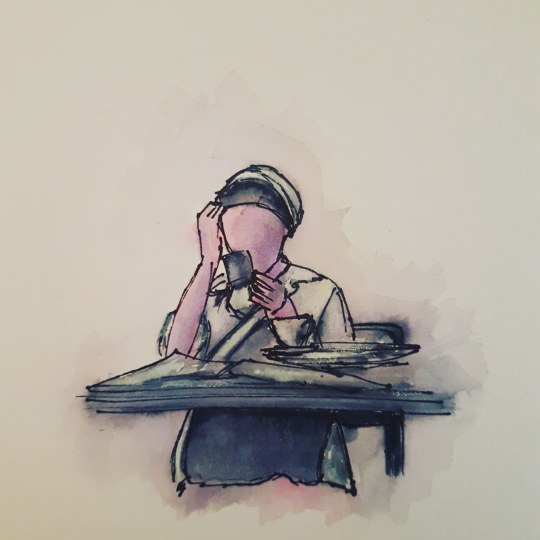
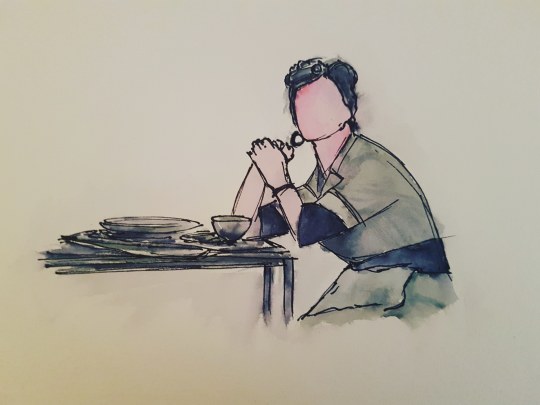
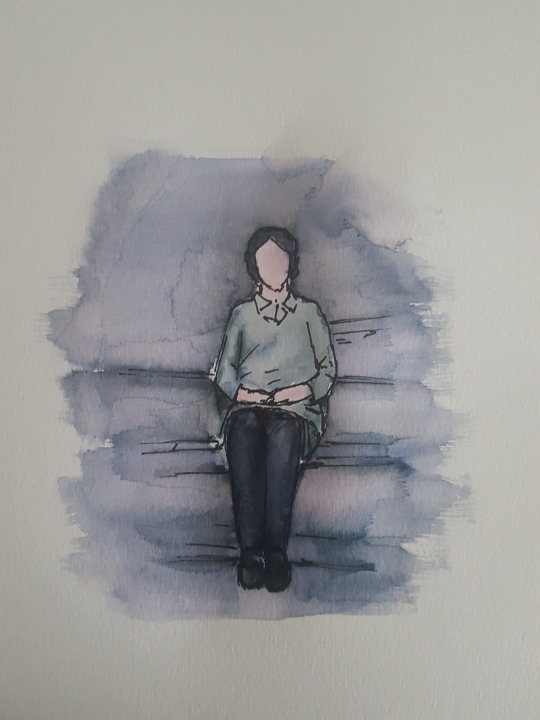

A new challenge, this time to work in watercolour. I have always been averse to working in watercolour, primarily because I had an art teacher who was so good at working in the medium it made me feel utterly inadequate with my own efforts. I have always worked very heavily with paint and this did not help. So to really make me uncomfortable I suggested we should give it a go.
I did attempt some very painterly ways of only using the paint to create the figures but always felt it lacking and not my style, returning to the process of creating outlines in fine pen that I would then populate with colour.
I was quite critical of my efforts initially as I did not feel they were very watercolour in style. i think the issue is that I have a very puritan notion of what watercolour representations should be. Through conversation with my Aunt (who is also an exceptional watercolourist) I was given some great advice that there isn’t a correct way to work and to just go with it. I wish I had been told this 30 years ago as I now feel that I have missed out on such a great form of expression.
The images are all taken from found black and white photos, mostly pre 1950s. I have not attempted to detail the faces and as I continued in this style I liked the unknown element, something that I think works in the context of forgetting features and faces. Photography can be so precise in showing all the fine details and features. Another reason I am so drawn to old photographs is that they do have imperfections, blur and movement that we have almost but lost in a digital age of increasing resolution and definition.
The watercolour style also gives a sense of fading. Many of the figures in these images will have long passed and even on the basis that I have collected these images from thrift stalls and markets there is a sadness in knowing that the memories did not pass to another member of the family for whatever reason.
I have also noticed the more that I examine the images I have created that, by obscuring or rather ignoring the facial details, other details stand out more. The position of the hands especially so.
It would be interesting to also see how these scale up (even more so). The original images are contact photos taken from the original negatives so they are quite small. My reworked images are scaled to A5 and A4 which further changes the way we look at the image. I think I will explore this more but possibly in acrylic.
0 notes
Video
vimeo
Resilient Americana, Higher Education, Plant Hall at the University of Tampa 2 is a Hybrid VR Painting by Dave Alber, fine art painter and virtual reality artist. American universities are the #1 higher education choice for foreign students, and not surprisingly, because America’s reverence for education was uniquely foundational. Illustrating this, in the 18th century, the Colonial Puritans had a far higher literacy rate than the people of either England or France. This was because reading and study were deemed essential not only for Protestant congregational services, but for the performance of civic participation in town meetings. The original nine colleges of America’s Colonial period are presently among the most revered universities in the world: seven of the nine are elite Ivy League universities. In the 19th century, there was a growth in both Protestant and Catholic universities, which served, beyond a religious education, as a means of advancement for many people from a rural to an urban life. In the 20th century, riding waves of technological, industrial, and social advances in the nation, there was a great boom in higher education. With the greater demand for education, new institutions arose fulfilling the needs of an increasingly socially diverse community. Students could now choose from among public, private, and state universities; liberal arts colleges, junior and community colleges; as well as for-profit colleges and technical institutes. Truly, the 20th century democratized higher education in its accessibility for people of every class. Today after the Internet revolution, online education, continuing education, and a wealth of digital offerings have made learning opportunities ubiquitous to life. A unique example of America’s higher education system, the University of Tampa is a private university offering over 200 courses of study. Its most iconic landmark is Plant Hall, which during America’s Gilded Age was railroad mogul Henry B. Plant’s Tampa Bay Hotel. Today, the Henry B. Plant Museum in the south wing of the building offers visitors a glimpse into the Gilded Age, while the annual Picnic In the Park outside the building allows visitors to participate more actively in this unique period of American history. A personal delight of mine is to visit the French statue of Esmeralda With Her Goat in the museum lobby. It is a reminder of the social underclass of Victor Hugo’s day for whom higher education was strictly inaccessible. Here in the museum lobby—as across America and in the Cloud—even the outsider finds herself, through her own merit, within an educational institution. RESILIENT AMERICANA: A Renewal of American Virtues In Tempering Times is a Virtual Reality Painting Exhibition by Dave Alber, fine art painter and VR artist (http://DaveAlber.com) This VR Art Exhibition is a Celebration of American Virtues. It can be found at ResilientAmericana.com. Resilient Americana explores the hardiness of American virtues in small towns and cultural sites in Florida and all across the country. The commitment of Americans to abide in the virtue body of cultural memory and the American character will sustain America through any rough patch of road.
0 notes
Text
The Hobby: Creative Capital and the Death of Pleasure

Recently at work, I asked my colleagues what their hobbies were. The dictionary defines a hobby as “an activity done regularly in one’s leisure time for pleasure”. I wasn’t surprised at some of the responses: a lot of my peers told me they didn’t have a hobby because they didn’t have time, but when pushed a little more, admitted to reading, gardening or playing a sport. A few colleagues interjected; any form of exercise, to them, was not a hobby but a necessity - interesting I thought (and a lot to unpack there for perhaps another time). However, one of my colleagues who I know to be very creatively active outside of their job, told me they didn’t have a hobby. "What about your podcasting?” I asked. The response was not what I would have expected; my colleague got so mad at me, their podcasting was not a hobby, it was a pursuit - it was a product of creative capitalism.
The opportunities for creativity for most people’s lives is increasingly scarce. Exhausted after a day of work; there is less time and less money to pursue creative expression. Anyone who does find the time to create outside of their day jobs must then decide on its creative capital - its value rather than its pleasure. The funny thing is, is that once we have found a creative activity outside of work that gives us pleasure, we are quickly followed by a feeling of self-loathing or guilt. Our society’s puritanical roots assure us that any form of creative self-indulgence is morally wrong, so to make it more acceptable we remove the pleasure and focus on the value. As more and more jobs and processes become systematised, concentrated and commodified, the everyday micro acts of creativity must also fall under those rules. And so the creative act of fulfillment no longer becomes about pleasure, it becomes about capital.
“Everyone is creative” is the slogan of a broad cultural shift in our society: “the artist” is being held up not as a poverty-stricken social malcontent, but as a triumphant pioneer of the new economy. Today, when the idea of a good, steady, life-long job seems impossible, corporate propaganda encourages us all to see ourselves as artistic souls. Instead of relying on big bureaucratic organisations like paternalistic corporations or the meddlesome nanny-state, we should all, like artists, rely on our personal portfolio of skills, passions and past accomplishments to secure short-term, no-string-attached “gigs”.
The reality of course is that no-one feels any special passion for working three part-time jobs, and few achieve aesthetic satisfaction from working in a call centre. But the idea of the artist and the promise of creativity are today being held up as “carrots” for workers in the age of creative capitalism. In our economic situation, many of us do free creative work all the time. We record music on our computers, we Photoshop images, we make short films, we write blogs or fan fiction - we teach ourselves. And we create what the internet calls ‘content’ and we do so because we enjoy it. So why can we not admit to ourselves that this form of work is pleasure, and not some form of individualised commodity?
We try and survive in this digital world, amidst increasingly casual and unsecure employment with few guarantees about our futures, because of this creativity becomes a highly individualised means of solace. The number of people we consider artists and the range of things we consider creative practice are expanding everyday, and while there is a lot of potential for people to create new forms of community and empowerment, it all takes place within and as part of the expansion of global and local poverty, exploitation, and social dislocation.
Despite all this, establishment pundits have declared ours an age of creative capitalism. Capitalism, they argue, is the best system for providing creative opportunities for everyone. Indeed, many argue that capitalism thrives on what is called “creative destruction” - the way competition forces companies and individuals to constantly reinvent themselves or go under, the way the incessant drive towards profit forces innovation and dynamism. What capitalism does, in effect, is fundamentally shift what we could call the “economy of creativity”: it drastically alters what sorts of creativity we think are valuable and it focuses humanity’s creative energies towards earning ever greater profit for the few. This system has quickly destroyed the planet and most people’s lives because it has no vision for the future. It is driven by irrational and pathological competition for profit, not by any compassionate and collective social vision. Imagine what the world would be like if we focused our creativity towards other ends?
I’m not going to lie, you can be very creative under capitalism, and many people are. But real creativity, the sort of creativity that is about pleasure and community fulfillment is almost impossible under capitalism. It is a privilege reserved for a very select few, usually based on their ability to make someone else money. Capitalism doesn’t make good use of human talents; it relies on exploitation and a fundamentally unjust division of labour. This system imprisons creativity in the prism of brutal economic “necessity”.
We need to focus on making it clear that real, deep creativity can never be achieved as an individual possession but is always a collective process, bound up with values of equality, social justice and community. The promise of pleasure can only be fulfilled in a very different society than ours. Creativity must embrace its potential and promise as a key part of cultivating critical, revolutionary communities that resist capitalism, colonialism, gender oppression and racism and create fierce and sustainable alternatives within and against the status quo. Creativity and pleasure are, in part, the way we refuse our current “reality” and, in a very small and often abstract way, propose or model something different.
Image: Oscar Mellow, The Pursuit of Pleasure, 1972. Courtesy of Arts Council Collection, Southbank Centre.
0 notes
Text
Evening writings from my university room (20-11-2019)
There is nothing that brings me joy and peace in this world in the way that writing does. I fear that my switch to digital writing is going to continue to cause me to neglect my notebook, but there is a natural ease that the quickness of digital writing offers that makes me gravitate towards it more. Maybe it’s less authentic, and some puritans might see me as a lesser writer for choosing the easy route, but I don’t believe in the ridiculous ideas that a craft is only respectable if we make it as hard as possible for ourselves to practice it. There is a certain amount of relief in my acceptance of writing as my identity, because I now have something that is finally wholly mine, that cannot be taken from me, doesn’t rely on other people to be acknowledged. Realistically it couldn’t, since my writing is for me to read alone, especially now that I have severed with my guardian angel therapist, who has always been the biggest promotor of my writing. I have written entire pocketbooks full of mumbo jumbo and illiterate thoughts, but have never reread them. Sometimes when I lose track of a thought process, I will reread the last few sentences to remind myself what I was trying to say (if anything at all), but other than that I never go back on what I wrote. I think part of it is fear, because it’s undeniable even to me that my emotional stability is rather fragile, and that rereading the passages I wrote about how happy I was to be cherished and in love would send me off a deep-end I am at this point not in any way able to face. I am trying to make university my next love, my second true love that I dedicate my life to other than myself, but am finding it hard. Every word I am taught about literature makes me count the days until I can hear the next, causing me to wonder if I’m in the right place at all. Philosophy is something that would better me in theory, but I find that in practice it is a pain to study, since I lose interest fairly soon after starting to read up on the majority of topics. I know I will never be a philosopher in the sense that is promoted or celebrated most. I lack the intelligence and ambition to write out a complicated logical theory on God’s existence or lack thereof, to be honest I could care less. If God exists, he must not like me very much, so I don’t see why I should bother to flatter him with the obsession around his existence. I am too busy obsessing with the meaning and implications of my own. Maybe it is natural because it comes with age, but I am finding it easier to make sense of my life. Everything feels lighter and it seems as though I am giving weight to the right things. My body is lumpy and soft in places I would otherwise shut myself in for, and I cannot be bothered to look in the mirror to spot out the sins my body has committed to the male gaze on that particular day, something that would have occupied most of my morning only a few years ago.
I am still heartbroken and devastated at the fact that I have lost meaning to someone who continues to mean so much to me. Not because I won’t be held or loved or kissed, none of those things could mean any less to me than they do now, but because I don’t have the privilege to watch him grow, to hear his thoughts on things that wouldn’t have otherwise mattered to me, and to enrage myself at the minor injustices he suffers on a negligible basis. I lack the conventionality to be to him what he wants out of a woman and I had always been aware of this, even before we were anything, but I was a fool in love and expected myself to be able to deal with the consequences of us falling out. I am currently dealing, but only barely. He treats me completely differently from how he would any other woman he had seen only because I let him, which I know to be my own fault. In a way it is pathetic how no matter the amount of times he reduces me to something so insultingly smaller than I am, I continue to want him above anything else. There has never been anything extraordinary about him, he is arrogant in every sense of the word and more insensitive still. He has no creativity, isn’t particularly intelligent or ambitious, had never had any passions until late, and fails to express himself in even the most fundamental ways. Often I felt as though I was teaching a robot the basics of human emotion. In some ironic sense, however much I know myself to feel more than most people do, he made up for by feeling less. If my character is at fault for our incompatibility, it is for the fact that I wasn’t easy enough for him to be with, which I am trying my hardest not to regret. I loved him because he did not care about the things most people did, he called me out on things most people would never have mentioned, and he loved me for everything I was taught to shame. He was silly in so many ways that I admired and fell utterly in love with and have very little hope to find in anyone ever again. If it had been my choice we would have never been apart, since every time I had the joy of being with him it felt as if no amount of time could ever be enough. In all his simplicity there was no amount of him I could have experienced that would have ever been enough for me to grow tired of his silliness and the way in which he desperately wanted to understand everything I was.
I am coping, to my understanding, well. I haven’t had urges to check up on him, and any time the thought of him does arise and throws off my mind and causes an amount of anxiety I have never experienced before, I calm it down. Lately I’ve been dancing a lot. I notice the Velvet Underground has the perfect music for anxious dance parties, and I’m quite sure I have never danced so ugly before, but I don’t really care. I jump and flail my arms around until I’m sure my heartbeat is caused by exhaustion alone. I’m happier than I would have expected. I write more than ever before and I consume art and information like it’s the only thing keeping me alive. It might be. I believe I’m simply not meant to be with anyone, considering how much more profound my life and mind seems to be when I’m forced to be alone. I’m going to remain alone until I find someone that truly understands me in the ways I want to be. Profoundly, unconditionally, and kindly.
0 notes
Note
do you do your art using a photo reference? like you paint from a photo/screenshot?
hey! someone asked me this hella months ago so i’m gunna copy/paste what i wrote back then as a jump off point and then build on that if ya don’t mind, so:
“oh theres fucking definitely references for clothing/guns/settings for sure. tho probably not in the way you think. lol like im gunna be sittin there eyeballin’ where certain buildings are and the GPS coordinates of how they relate to each other in a made-up city […] :-P LOL. its much like painting from real life though, use certain images for references for how lighting hits shit, use other niche ref photos for how made-up guns […] look, for example. like a… digital plein air. you gotta use shit to stay true, but then mentally lump all that knowledge together under your own version of a story, and voila. set your scene, insert characters, mentally storyboard where they’re gunna be within the “shot”, how they portray shit, then you’re good. esp when you try and be ””cinematic”” about art, you gotta be precise with framing, how postures and poses tell a story, etc. anyway this is probably very longwinded for what you meant, but hopefully that helps! please god dont ever be afraid to use refs. jeez, yeah, have it open on a new monitor and cross ref for cloth folds, cross ref for hotel signs and technical details. (example: how light hits dull metal or whatever) just use your mind to tell your own story with the organic stuff. if that makes sense lol so… build a visual library, cross reference that shit to amalgamate your final ‘scene’ i guess. at least thats how i do it (or have been, lately. oh god lord knows ive been trying)”————————-
so, that’s what i had months ago. and i still stand by it 100%. but, to reiterate and build on that, i do need to disclaim that i haven’t drawn fucking jack shit in months so take it as an archived blurb of advice that stands most strongly against art i was making months ago. as an addendum to what i feel towards the subject now? go crazy. fuck the rules and draw with refs, no one in the lord’s year of 2017 is a modern-day michelangelo. we aren’t creating in stucco houses in tuscany with large open windows and giving our whole lives to perfect art. we have the internet, we have like a gazillion people willing to give us feedback on a whim (like you are now!) and primarily;
we aren’t creating in a vacuum anymore.
there’s no such thing as puritanical creation in the age of the internet. even well-off yacht owners with 60k to spend on atelier educations occasionally inspire and are inspired by others numerous times a day. this shit is all connected, no one creates without referencing experiences or other content. hell, even other artists.
so fuck yes to refs, use it for shadows, for how light hits a linen curtain. for how someone’s thigh muscles expand against a car seat. use refs for framing, watch old foreign cinema to look at how cinematographers (a form of an artist imo) frame people in motion, how the rule of thirds pushes dynamics through negative space, etc. use refs found online, shoot your own, use it to bolster your own knowledge and push your creations further. and honestly if anyone says they do otherwise they either a) have a yacht and sailed it on their gap year b) are straight up lying to look cool and have 187k in debt from calarts & are spending another 18k on wifi for their cave. also im gunna assume this ask was about how i use refs, so i answered as such. if this was some lowkey shade throwing please visit me on the burlington skyway near niagara and we can fisticuff
10 notes
·
View notes